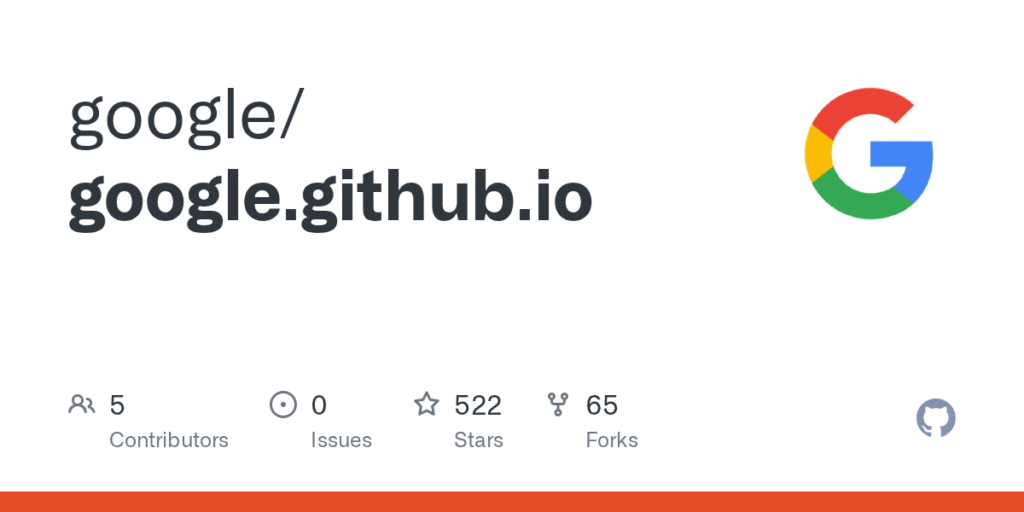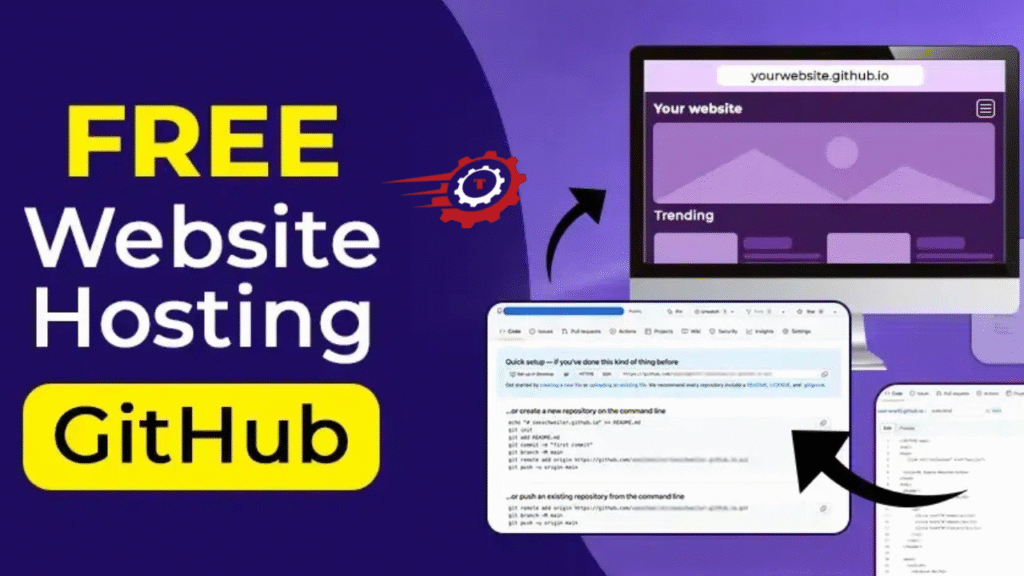If you’ve ever wondered how developers show off their coding projects or create free websites, you’ve probably heard the term “GitHub.io.” But what is it exactly? And why do so many developers love using it? In this guide, you’ll learn what GitHub.io is, how it works, how to use it for your own website, and why it’s one of the best free web hosting platforms for beginners. Whether you’re just getting started with coding or simply want a place to publish a small project, GitHub.io could be the perfect solution for you.
What Is GitHub.io?
GitHub.io is a free web hosting service provided by GitHub Pages, which allows users to publish HTML, CSS, and JavaScript files directly from their GitHub repositories. GitHub is a platform mainly used by developers to host and share code. When you hear “GitHub.io”, it usually refers to websites that are created using GitHub Pages, and the “.io” part is the domain extension GitHub uses for those sites.
For example, if your GitHub username is johndoe, your GitHub.io site would be available at johndoe.github.io. These websites are static, meaning they don’t use a server-side language like PHP or databases like MySQL. They are perfect for things like personal portfolios, documentation, blogs, project pages, and even interactive demos.
GitHub.io works directly from your GitHub account, which means any changes you make to your repository will instantly be reflected on your website. It’s simple, free, and doesn’t require much technical knowledge to get started.
Why Is GitHub.io So Popular?
GitHub.io is extremely popular for several reasons. First, it’s completely free to use, with no ads, no bandwidth limits, and no hosting fees. This makes it perfect for students, hobbyists, or developers who want to experiment with web design and development. Second, it’s backed by GitHub, one of the most trusted platforms in the coding community, which gives it strong credibility and security.
Another reason GitHub.io is loved by developers is that it integrates directly with Git, a powerful version control system. This allows you to track every change in your project, work collaboratively with others, and even roll back to previous versions if needed. GitHub.io is also widely supported by static site generators like Jekyll, Hugo, and Eleventy, making it easy to build websites using templates and markdown files.
For SEO purposes, GitHub.io sites are indexable by Google, which means they can appear in search results. Many developers and businesses use these sites to showcase projects, promote resumes, or even run small blogs that get real traffic from Google.
How to Start Using GitHub.io
Getting started with GitHub.io is easy. All you need is a GitHub account and some basic website files (HTML, CSS, JavaScript). Once you’ve created your account and uploaded your files, GitHub will publish your site automatically under the github.io domain.

Here’s a simple step-by-step guide:
Create a GitHub Account
Go to github.com and sign up for a free account. Choose a username that you’re comfortable displaying publicly because your GitHub.io website will be tied to this name (e.g., yourusername.github.io). After signing up, verify your email and log in to your account.
Make a New Repository
Once you’re logged in, click the “+” icon at the top right and select “New repository.” Name the repository exactly like this: yourusername.github.io. This naming format is required for personal GitHub Pages websites. Make the repository public and check the box to initialize with a README if you want.
After that, click “Create repository.”
Add Your Website Files
Now, it’s time to add your website files. These should include at least an index.html file, which is the main file browsers look for when opening a website. You can upload files directly using the GitHub interface, or use Git to push files from your computer.
After you’ve added your files, GitHub will automatically publish your site. You can view it by going to https://yourusername.github.io in your browser. That’s it! Your site is now live.
Is GitHub.io Safe to Use?
Yes, GitHub.io is safe for both developers and users. Since it’s run by GitHub (a Microsoft-owned company), it uses modern security protocols like HTTPS encryption, which ensures data is transmitted securely. This means any information shared or viewed on a GitHub.io site is protected from hackers or unauthorized access.
Additionally, GitHub itself has built-in security tools like Dependabot and vulnerability alerts that help developers keep their code safe. Because the content is static (i.e., not connected to a database or server-side logic), the risk of common website vulnerabilities like SQL injection or cross-site scripting is minimal. This makes GitHub.io a secure choice for hosting simple websites, portfolios, documentation, and more.
What Can You Build with GitHub.io?
GitHub.io is ideal for hosting a variety of static web projects. Here are some things you can build:
- Personal portfolios to showcase your resume, projects, and skills
- Project pages to provide documentation or live demos of your GitHub repositories
- Technical blogs where you can share tutorials and articles
- Landing pages for apps or businesses
- Open-source project documentation
- Interactive web apps using only client-side JavaScript
- Educational resources or code examples
Because GitHub.io supports HTML, CSS, and JavaScript, you can get quite creative with the type of content you host. You can even add animations, forms (using third-party services), and integrations with tools like Google Analytics or Disqus for comments.
Examples of Websites Using GitHub.io
To give you a better idea of what’s possible, here are some real-world examples of sites that are built using GitHub.io:

Personal Portfolio
Many developers use GitHub.io to create sleek portfolios where they can link to their GitHub projects, resumes, and social media profiles. These sites often include a homepage, a project section, and a contact form. Tools like Bootstrap or Tailwind CSS make designing these sites much easier.
Project Pages
GitHub.io allows you to create a separate website for each repository. This is great for showcasing individual projects, providing live demos, or writing detailed documentation. If you’re working on an open-source tool, you can use your GitHub.io site to host instructions, changelogs, and tutorials.
Interactive Demos
If you’ve built a small game, animation, or browser-based tool, GitHub.io is perfect for hosting live demos. You can upload your HTML/JavaScript code and share the URL with others instantly. This is especially useful for showing off your work in job applications or on social media.
GitHub.io vs Other Free Hosting Sites
When compared to other free hosting services like Netlify, Vercel, Google Firebase Hosting, or Neocities, GitHub.io stands out for its simplicity and integration with GitHub. You don’t need to install any external tools or connect domains—just create a repository, push your files, and your site is live.
That said, other platforms may offer advanced features like serverless functions, drag-and-drop interfaces, or real-time databases. If you’re building complex web apps, you might prefer these alternatives. But for most static websites, GitHub.io is more than enough—especially since it’s completely free, beginner-friendly, and doesn’t place ads on your site.
The Bottom Line
GitHub.io is one of the best free website hosting options for beginners, students, and developers alike. It offers a fast, secure, and simple way to publish static websites without worrying about server setup or backend code. Whether you’re building a portfolio, creating documentation for a project, or just experimenting with HTML and CSS, GitHub.io provides everything you need to go live in minutes.
Thanks to its integration with GitHub, it also helps you learn version control, which is an essential skill for any developer. If you’re just starting your journey into web development or need a free and professional-looking way to showcase your work, GitHub.io is an excellent place to start.

